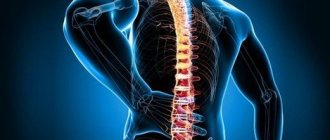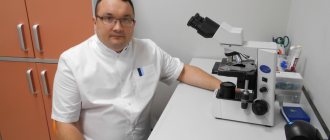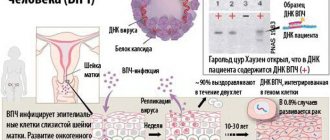Content
- Neonatologist - who is he and what does he treat?
- Responsibilities of a neonatologist
- Initial examination by a neonatologist
- Child monitoring
- In what cases is it necessary to consult a neonatologist?
A neonatologist examines the child after birth to identify signs of diseases and birth injuries, and assesses his condition using the Apgar scale. Neonatologists care for children who were born prematurely, as well as children who are in the perinatal center after the 28th day of life.
If any pathology is detected in a child during intrauterine development, a neonatologist can work with a gynecologist to manage the pregnancy.
What tests will the neonatologist ask for?
- Analysis for Rh factor;
- Blood group analysis;
- Neonatal screening.
In the maternity hospital, a neonatologist necessarily takes a blood sample from newborns, which he applies to a special test strip. Test strips are tested in the laboratory for VG and PKU. If any disease is suspected, parents receive an urgent notification with a request to contact the endocrinology clinic (EG) or medical genetic consultation (PKU) for a repeat study. Once the diagnosis is finally confirmed, appropriate treatment should be prescribed immediately.
If no pathologies are detected in the baby, parents, as a rule, are not notified.
Neonatologist - who is he and what does he treat?
Many people know about the presence of a neonatologist in maternity hospitals and perinatal centers, but when choosing a maternity hospital, most expectant parents do not pay attention to the qualifications of this specialist, because they do not know what exactly this doctor does.
Neonatologists do not deliver babies, but observe the birth of a child, assess his health and place the newborn on the mother's breast.
Despite the specifics of the work (limited age of patients, etc.), a neonatologist can hardly be called a specialist in a narrow profile - it is this doctor who has to recognize and treat the most diverse types of diseases of organs and systems that occur in newborns.
A separate area of activity of a neonatologist is nursing premature babies (currently, a child is considered alive if he was born at 22 weeks of pregnancy and weighs at least 500 g).
In case of premature birth or birth with complications, mothers are usually sent to perinatal centers or maternity hospitals that have pediatric intensive care units - in such maternity hospitals, the main task of the neonatologist is to resuscitate and care for children. But even in maternity hospitals focused on healthy mothers and children, during a normal birth, a newborn may need urgent help from a neonatologist (asphyxia, etc.).
The neonatologist examines the baby immediately after birth and then conducts regular examinations over several days to identify any possible diseases or developmental abnormalities. If necessary, the doctor chooses further tactics for care and treatment.
The neonatologist-pediatrician also advises the mother on caring for the baby, and also individually (if the child needs observation and treatment) gives recommendations on further visits to specialists, additional tests and instrumental studies.
Neonatologist
Neonatology is a science that studies newborn children: their growth, development, and pathological conditions.
A doctor whose duty is to apply theoretical knowledge of this branch of medical science in practice is called a neonatologist. Neonatology was first identified as an independent type of medical practice at the beginning of the 20th century, and until that time it belonged to the field of pediatrics and obstetrics. In the fifties, Dr. Virginia Apgar proposed a scale, later named after her, to assess the condition of a newborn and decide on the need to apply resuscitation measures to him. Later, the Silverman scale was developed, which can be used to analyze the state of breathing and the presence of respiratory system disorders in a baby. And after the first device for artificial ventilation of the lungs of premature babies was designed in the sixties, neonatology began to develop rapidly, and accordingly, the demand for relevant specialists - neonatologists - increased.
The terms “neonatology” and “neonatologist” were first proposed in 1960 in the medical publication “Diseases of Newborns”.
Responsibilities of a neonatologist
Since the main task of a neonatologist is to create the necessary conditions for “laying the foundation” of human health, the neonatologist not only examines the newborn and monitors his health until discharge from the hospital, but also advises the expectant mother during pregnancy to reduce the risks of possible complications.
During the consultation, the neonatologist:
- helps a woman prepare for childbirth (preparation includes teaching breathing techniques, providing information on pain management methods and psychological preparation);
- draws attention to the nuances of the course of multiple pregnancy;
- teaches how to care for a child, talks about the features of feeding (breast, artificial or mixed), etc.
A good neonatologist should:
- Understand the influence of various factors at different stages of pregnancy, as this allows you to take into account risk groups and prevent miscarriage.
- Know how labor affects the fetus and newborn. This requires knowledge about the physiology and pathology of the fetus during childbirth, the anatomical and physiological characteristics of a full-term and premature newborn (taking into account body weight).
- Be able to provide medical care to premature babies (including at the 2nd stage of nursing) and children with extremely low birth weight, master the basic principles of nutrition for newborns who are in critical conditions, understand the features of infusion and transfusion therapy in newborns.
- Know the features of disorders of the central nervous system in newborns depending on gestational age, understand the cardiology of newborns, diagnose and treat neonatal seizures.
A neonatologist has to:
- Organize the necessary measures for the birth of a newborn (oxygen mask for apnea, etc.). It is especially important to properly organize measures for the birth of a child with extremely low body weight.
- Choose appropriate methods for maintaining an optimal microclimate and temperature regime, nursing and intensive care based on the characteristics of postnatal adaptation, the characteristics of children (intrauterine growth retardation, large size for a given gestational age, postmaturity, multiple births) and conditions bordering on the norm.
- Determine treatment tactics when identifying diseases, diagnose and promptly provide assistance in a state of shock, dysfunction of external respiration, pathology of the urinary system, liver dysfunction, birth trauma, and also carry out the prevention of bilirubin damage to the brain. To identify diseases, a neonatologist must be able to recognize the most common chromosomal and genetic diseases, endocrine diseases and inborn errors of metabolism, infectious pathology of the perinatal period, polycythemia, anemia and hemolytic disease of the newborn.
In addition, the neonatologist must be familiar with the specifics of providing medical and advisory care to newborns on-site (as a member of the on-site neonatology resuscitation team).
To provide care to newborns, a neonatologist must:
- navigate the clinical pharmacology of drugs used in newborns;
- be able to identify diseases that can be eliminated through surgery, and know the features of transporting a newborn to a surgical hospital;
- master clinical, laboratory and instrumental methods of examining newborns.
Advice from a neonatologist
From birth, the baby should have the following reflexes:
- Grasping - if you put a finger in a baby’s palm, he will squeeze it tightly. Sometimes even he can grasp the finger so tightly that the child can be lifted slightly;
- Search - if you start stroking the child in the area of the corner of the mouth, he will turn his head towards the stimulus;
- Automatic gait reflex - if a baby is taken under the armpits and placed on a flat surface, he will raise his leg as if he is about to take a step;
- Proboscis – if you touch the baby’s lips with your finger, he will pull them out into a tube;
- Crawling reflex - if you put a baby on his tummy and put your palms on his feet, he will begin to push off and try to crawl;
- Babinski reflex - if you lightly tickle a child's heel, he will begin to straighten and spread his toes.
After a consultation with a neonatologist, the pediatric nurse will tell the young mother how to care for the umbilical cord and skin, how to wash the baby, how to properly dress him and attach him to the breast.
Initial examination by a neonatologist
The neonatologist assesses the baby's condition in the first 30 seconds of life, primarily paying attention to breathing and heart rate.
Restoring breathing during primary apnea (breathing stops after attempts to take the first breath) can be achieved by wiping it dry or patting the feet.
If such stimulation is ineffective and secondary apnea occurs or the baby's heart rate is less than 100 beats per minute, the neonatologist must help the baby take a breath and expand the lungs using an oxygen bag or mask.
The baby's condition is assessed using the Apgar scale after the baby begins to breathe effectively. The neonatologist evaluates the following points twice, at the 1st and at the 5th minute of life:
- heart rate;
- breath;
- muscle tone;
- reflex irritability;
- skin color.
The points are summed up and an overall Apgar score is given, which is recorded in the birth history.
If the score is below 7, additional measurements are taken every 5 minutes for 20 minutes.
In prematurely born children, the initial assessment shows the severity of asphyxia, which allows you to select the most effective set of resuscitation measures.
After the neonatologist has given an assessment, the child is weighed, the circumference of the head and chest is measured (the measurements are taken by the midwife), after which the neonatologist examines the newborn in detail.
During a detailed examination, the doctor pays attention to:
- Baby pose. Normally, there is a slight adduction of the head to the chest, arms bent at the elbow joints with hands clenched into fists, pressed to the sides of the body, legs bent at the hip and knee joints. With facial diligence, the head is usually thrown back, and with pelvic diligence, the legs are sharply bent at the hips and straightened at the knee joints.
- Facial expression. With many diseases, the child’s face acquires a painful expression; with subarachnoid hemorrhages, the look becomes “frightened”, and an almost complete absence of facial expressions occurs with subdural hematomas and encephalopathy.
- Skin color and condition. The subcutaneous fat layer in full-term babies is well developed, velvety pink skin is covered with vellus hair (mainly in the shoulder girdle). The peripapillary circle of the mammary gland reaches 1 cm or more, the nails should be dense, and the ear cartilage should be elastic.
- The cry of a child. It is graded on strength, duration and modulation. A weak cry is observed in very premature infants, and aphonia indicates damage to the central nervous system if tracheal intubation was not performed. An irritated cry is observed with subarachnoid hemorrhages and increased intracranial pressure, and a monotonous cry is observed with congenital hydrocephalus.
- The shape and size of the child’s head, the condition of the sutures and fontanelles. In full-term babies, the head circumference is 33-36 cm (may be 1-2 cm larger than the chest circumference). The large fontanelle, normally reaching 2.5-3 cm, is open. The small fontanel should not exceed 0.5 cm in diameter.
- The child’s oral cavity to prevent cleft palate.
- Clavicle to rule out a fracture.
- The shape of the chest. Arms, legs, feet and palms are also examined.
- Spreading the legs at the hip joint to prevent dislocation.
- Genital organs and anus.
The neonatologist then listens to the heart and lungs, palpates the abdomen, and checks the baby’s muscle tone and reflexes.
If a child is diagnosed with 5 or more minor developmental anomalies, a more in-depth examination is prescribed to identify genetic pathology and developmental defects.
After the initial examination, a conclusion is made about the child’s condition.
What does a neonatologist monitor?
Neonatologists monitor the baby’s health and are responsible for its safety. They know everything about developmental disorders, pathologies of newborns and are ready to provide assistance at any time. Its effectiveness depends on many factors; the doctor’s main task is to obtain the most complete information about the identified disorder. Diagnosis is based on studying the condition of the following organs of the newborn:
- Stomach. Feeling the baby's abdomen is a mandatory measure. This is how a neonatologist evaluates the condition of the child’s liver and spleen and determines their size. During the examination, the characteristics of the child’s bowel movements and how the original canal was discharged are determined. If signs of congenital pathologies are identified, additional examinations are prescribed.
- Neck. By palpating the neck and collarbone, the neonatologist determines the absence or presence of damage that the child could have received during childbirth. In so-called muscular torticollis, which is common in some babies, the doctor may detect shortening of the muscle.
- Head. After the birth of a child, neonatologists necessarily study the condition of the baby’s skull. Visual and palpation examination allows you to determine the size of the fontanelles, the condition of the bones, the presence of birth tumors, swelling and other abnormalities.
- Heart and lungs. Using a phonendoscope, the doctor listens to the baby's heartbeat, pulse and breathing rate. A good specialist will always notice deviations and take action.
- Genital organs. In newborn boys, the testicular area is examined. The condition of the scrotum is determined by palpation. In girls, the condition of the labia is studied.
- Muscles. General diagnostics after the birth of a baby includes a mandatory study of muscle tone. The neonatologist flexes and straightens the child’s limbs, which allows to identify the presence of abnormalities. The most common is physiological hypertonicity. This condition is characterized by increased tone and disruption of the flexor muscles.
- Hip joints. While examining the hip joints, the doctor spreads the child’s legs. Normally, the limbs are separated adequately; if this process is difficult, there is a possibility of developing dysplasia. The symmetry of the skin folds on the baby's legs is also studied.
- Reflexes. A non-born person has quite a lot of reflexes. By studying the reaction to stimuli and specific manifestations of reflex functions, the neonatologist assesses the state of the baby’s nervous system.
Child monitoring
Every day until discharge, the neonatologist examines the child, checking:
- general condition of the newborn;
- color of skin and mucous membranes;
- motor activity and muscle tone;
- the severity of unconditioned reflexes;
- activity of the cardiovascular system;
- the functioning of the respiratory, urinary, digestive and reproductive systems.
If necessary, the neonatologist invites specialists to perform an in-depth examination of the child, conducts additional examinations and prescribes treatment.
After the examination, the neonatologist informs the mother about the health status of the newborn and gives recommendations on feeding and care.
What diseases does a neonatologist treat?
Speaking about what a neonatologist treats, it is worth mentioning again: we are talking about childhood diseases that arise during the newborn period. These include:
- prematurity, postmaturity;
- jaundice;
- asphyxia of the newborn;
- vomit;
- diarrhea, constipation;
- diaper rash;
- candidiasis;
- bronchitis;
- hepatitis;
- blenorrhea (inflammation of the eyes in a baby), conjunctivitis;
- phenylketonuria (a hereditary disease manifested in a violation of amino acid metabolism);
- umbilical hernia, navel bleeding, “wild meat”;
- hypothyroidism (low thyroid function);
- various rashes on the skin or mucous membranes;
- short frenulum of the tongue;
- lack of vitamin K;
- congenital syphilis, HIV infection;
- cytomegalovirus infection.
In what cases is it necessary to consult a neonatologist?
Consultation with a neonatologist is necessary:
- Women who have any pathologies in the development of the fetus during pregnancy. A neonatologist will help you decide in advance on the treatment tactics for a specific pathology that the newborn will need after birth.
- For mothers of premature babies (born between 28 and 38 weeks).
- Mothers of newborns who have not reached the 28th day of life and who have health problems. Common reasons for referral are the presence of an umbilical hernia, suppuration or bleeding of the umbilical wound, weakness of basic reflexes, impaired breathing, changes in skin color, rash and diaper rash.
When should you consult a neonatologist?
Many of the conditions of the unborn require the attention and participation of a neonatologist. Among them, the most common and frequent are umbilical hernias, umbilical bleeding and pathology called “wild meat”. The last manifestation is associated with the formation of a piece of meat in the navel. It remains after the umbilical section falls off. The cause of bleeding from the navel may be an insufficiently well-tied umbilical cord. A neonatologist eliminates this problem quite quickly. As for umbilical hernias, there may be several reasons for their appearance. The development of pathology is most often associated with a poorly tied umbilical cord, overexcitability and loudness of the baby, and strong gases. An umbilical hernia is not considered a dangerous condition for newborns, however, the doctor should be aware of the problem.
Advice and help from a specialist may also be needed if diaper rash occurs. They usually appear in the genital area, buttocks and lower abdomen. The first or mild degree of diaper rash manifests itself in the form of skin redness. The second (medium) degree is characterized by the appearance of erosive formations. The most severe, third degree, diaper rash causes the development of ulcers. These conditions cause discomfort, can be susceptible to infection, and are often painful for the baby. A neonatologist can save the child from these troubles.









